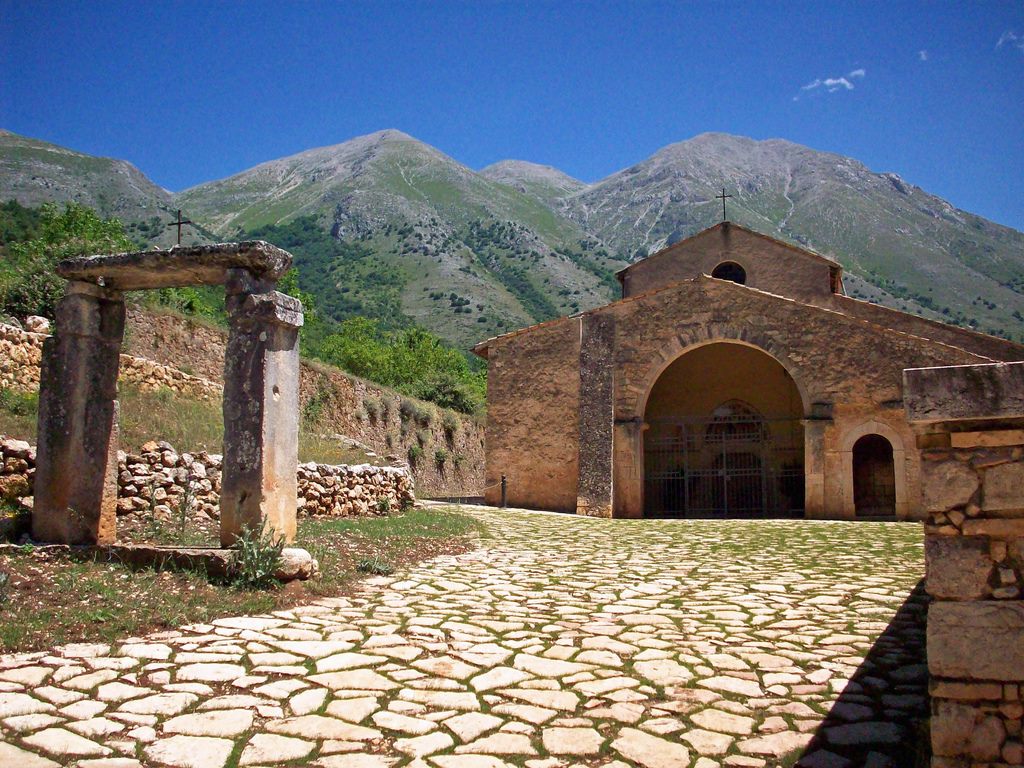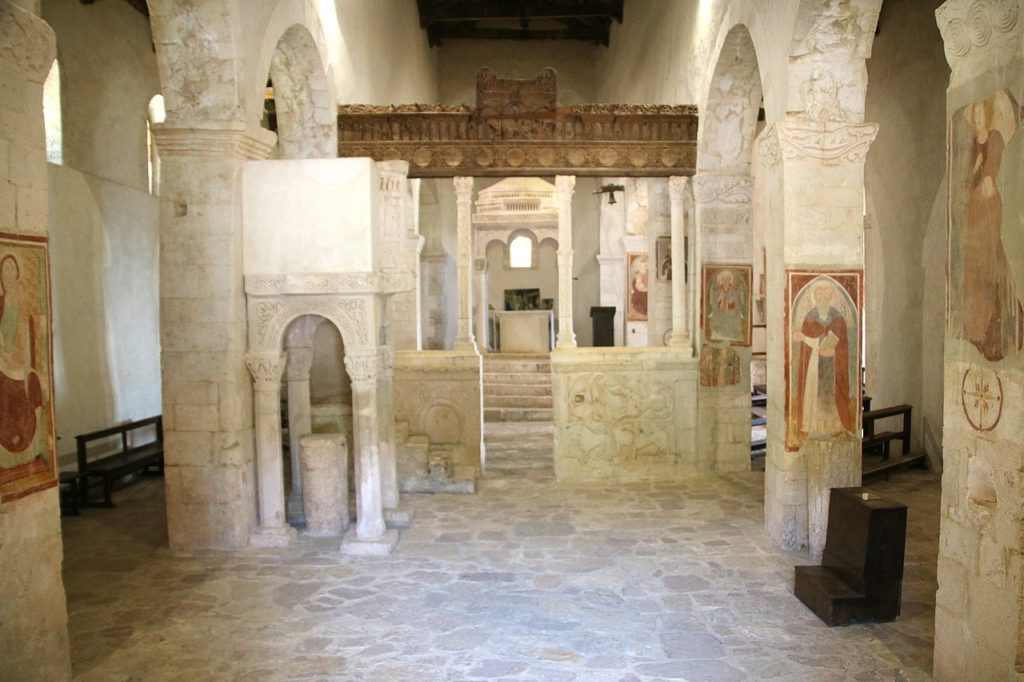Introduction
In this article, I would like to talk to you most practically and concisely possible about the Gregorian chant, born in the ninth century under the need to combine the uses of Roman ritualism with those of the Gallican tradition. But let’s take a step back and look at the reasons for this phenomenon from the ground up.
The Origins: The Project Of Unification Of The Catholic Rite
We have said that Gregorian chant was born as a set of Roman and Gallican ritualistic traditions. In other words, it was originally a Roman-Frankish song. What is still not clear to us is why the Frankish bishops wanted to unify the traditions of their ritualistics with those of the Church of Rome. The first fact on which we must dwell is that the Christian rite had lost its unity, which it had maintained roughly until the second century, because of the great differences existing between the cultures and communities in which it had spread. Think about how different the musical tradition of Jerusalem could be compared to the one in Rome; on the ritualistic front, we can imagine how much more essential the Roman one was compared to the eastern redundancies. These differences were reflected in the structure of the rite, which could be adapted to the social, cultural, environmental and other needs of any place. According to a custom that is proper to the Catholic Church, namely that of unifying its manifestations and centralizing the rite as much as possible, an attempt was made in the ninth century to unify the musical structure of religious ceremonies. This process started from political needs: Pope Stephen II had approached the king of the Franks Pepin the Short to find a valid ally against the apparently unstoppable advance of the Lombards. It will be precisely when Stephen II comes into contact with the customs of the Gallican church that the process of unification of the two rites will begin, since the pontiff will immediately notice the profound ceremonial differences. It can be said, in other words, that the political impulse was given precisely by Pope Stephen II, but that also the Franks had the interest in creating a stronger bond with the Church of Rome, aligning themselves with the single rite to confer on their kingdom the prestige of communion with the ritualistic modalities of the papacy: We observe in this choice the first glimpse of what will be called the Holy Roman Empire.
Charlemagne
Charlemagne continued the project of his father Pepin the Short, and implemented the fundamental passage of abolition of gallican singing in favor of the Roman one. Needless to say, this change greatly facilitated the process of ritual unification and allowed the creation of more stable and deeper ties between the colonies and the conquered territories, definitively preparing the birth of the Holy Roman Empire.
Why A Roman-Frankish song?
What we have said so far does not yet explain our initial consideration, that Gregorian chant is comparable to a Roman-Frankish chant. In particular, with the abolition of Gallican chant in favor of Roman chant, it seems that Gregorian chant is nothing more than the result of an import into the Frankish territories of Roman chant. In reality, for the realization of the unification of ritualistics, the Church of Rome sent beyond the Alps real experts, Gregorianists able to teach the art of singing in Rome at the Anglican churches. These melodies, which for the Franks often appeared completely new, were fixed in writing to facilitate their copying and reproduction, and it is precisely in this act that a real contamination took place between the two repertoires, the already existing one of the Franks and the one that was transmitted to them by the Church. Let’s also not forget that the bishops of the Alps knew that the differences in ritualistic were not the result of mere fantasies, but of territorial and cultural sedimentations that had to play an essential role in the absorption and tradition of the new songs; for this and other reasons, the Frankish monks felt the need to adapt the songs of Rome to the customs of Frankish ritualistic. Soon it was considered in a rather arbitrary way on a historical level that this new song, born through the complex system of necessary contaminations that we have just described, was the work of Pope Gregory the Great (who lived about three centuries earlier): hence the name of Gregorian chant.
The Function Of Singing In The Catholic Rite
The Catholic liturgy has its center in the Mass, celebrated daily. On Sunday the most important rite takes place, but the musical functions remain almost the same throughout the liturgical year: the songs that are part of the staff called ordinarium are sung in every Mass, with small adaptations on the occasion of precise moments of the year; the proprium includes those songs that are sung, even in a varied form, on the occasion of specific holidays. All the songs of the liturgy are part of two collections: the Gradual for the Mass and the Antiphonary for the Office. In fact, the organization of the liturgical year in Advent, Christmas, Lent, Easter (and Ordinary for the rest of the time) is the prerogative of ecclesial life, but the monks of the ninth school followed a different ritual called the Office of the Hours, articulated in a liturgical day that consists of various moments of prayer and celebration.
| Morning | 2 o’clock |
| Lodi | 5 a.m. |
| First Hour | 6 a.m. |
| Third Hour | 9 a.m. |
| Sixth Hour | 12 noon |
| Ninth Hour | 3 p.m. |
| Vespers | 5 p.m. |
| Compièta | 8 p.m. |
Both in the Office and in the Mass the rite is sung. That is why in the attempt to unify the Frankish rituality with the Roman one (in the form of Gregorian chant) so much attention is given to the musical aspect of the celebration: within it, song and rite cannot be separated. The function of music was to subordinate itself to the word to clarify its meaning and pronunciation. Here, the essential melodic line could effectively articulate words that would have been difficult to understand in a voice without an accompaniment that would allow it to cross the Romanesque naves. An evocative architectural example is represented by the Church of Santa Maria in Valle Porclaneta, located in the municipality of Magliano de ‘Marsi (AQ), near the hamlet of Rosciolo, in Abruzzo. The church was originally conceived as a monastery, and represents one of the most important Italian examples of Romanesque church of Benedictine origin. The external architecture follows the slopes of Mount Velino behind. We have a suggestive description of this church in the literature of Anne McDonnell:
“It is very easy for Santa Maria in Valle to escape the attention of the traveller, as it is located very far from the main road, which leads elsewhere. Many look at us with wide eyes, when we refuse to take the coach to go to Rosciolo, but it is magnificent to climb on foot through the golden countryside; in the air, there is a vivid light and the magnificent panorama of the Porclaneta Valley leads us to continue. The road, which leads to the temple, passes under the village, without crossing it. Rosciolo is the village from which mountaineers leave at night to climb the Velino and then the road becomes impervious but not without shade. For the populations that live around there, the Velino is a friend; on the slopes they collect medicinal herbs and look up at this mountain to draw weather forecasts. From Rosciolo the road goes up and when it seems to collide with the back wall of the valley, here is our S. Maria which is located under a steep wooded hill, at the end of the world and completely isolated. There are no more than two houses, where once there was a flourishing village “Villa Maggiore”, which is presumed to have been destroyed by Charles of Anjou for having offered help to Corradino. What remains of the church does not seem noteworthy: a structure similar to a barn with an elegant apse and a south-facing window. The porch is open and it seems that sometimes it is used as a stable. This national monument is undoubtedly a truly useful retreat. On the portal there is a lunette with a delightful fresco, representing Our Lady with angels on the sides, which dates back to the early fourteenth century. An English traveler, who passed by here, thinking that it was wasted in this wasteland, offered to buy it; he made a rather high offer and was surprised when he did not get what he wanted. It is right to worry about its safety, even if it is treated with respect by the herdsmen, who make cows and mules house under such a fresco. The portal of the church is barred and the neighboring houses are empty.”
Anne MacDonell, “Negli abruzzi”, 1908.

This jewel, in addition to representing a solution of continuity, at least in its own history, between the monastic and ecclesial worlds (since as we have said it was originally a Benedictine monastery), is mentioned too rarely by the manuals of Art History. It contains an intact example of wooden iconostasis: some scholars consider it the only example in Europe to present this state of conservation.

As we see from the image above, the environment of the Romanesque church was very intimate, and Gregorian chant could be heard with great effectiveness. According to how many notes each syllable contained, the style of the songs was distinguished in:
| Syllabic Style | A note for each syllable of the song |
| Semi-Ornate Style | One or more notes for each syllable of the song |
| Melismatic Style | Many notes for each syllable of the song |
If you want to deepen the musical analysis and reading of music, as well as your compositional skills, do not forget that there is our individual online course dedicated to this: you can read the program in the online courses section > the course program, or book an individual lesson by consulting the availability calendar directly here.
The Sacredness Of Gregorian Chant
Around the ninth century Gregorian Chant became the official convention of the Catholic Church, and for this reason it began to be considered sacred. This new connotation made it difficult to process: the texts began to no longer be reworked, they could not be modified in any of their parts or replaced. For this reason, all the creativity of the composers began to shift to pieces that had a marginal role in the liturgy, up to the interpolation of musical parts into already existing songs, which in this way remained intact. These additions commented on the passages and added theological clarifications.
Tropes And Sequences
The maximum expression of these new interpolations was represented by tropes and sequences. The former represented interpolations of real melodies, texts or texts on melody to a liturgical song, which could belong independently to the Mass or to the Office; the latter, were added to the alleluia song, an essential part of the rite in the mass, and more precisely represented additions of syllabic text that was built on the final melisma.
Both Tropi and Sequenze were abolished with the Council of Trent (1545-1563) in the sixteenth century: of the sequences survived only four examples that were considered inspired by the Holy Spirit:
| Title | Execution context | Period and Author (if known) |
| Victimae Paschali Laudes | Easter Mass | Attributed to Wipo, X century |
| Veni Sancte Spiritus | Pentecost Mass | XI century |
| Lauda Zion | Corpus Christi Mass | XIII century |
| Dies Irae | Requiem Mass | Thomas of Celano, XIII Century |
The Tropes gave rise to that polyphonic genre that will have so much luck in later ritualistics: the conductus. This was a piece built specifically to accompany the movements of the celebrant. We are in a later moment, and a musically different style if we consider that the complex transition from monody to polyphony will have already taken place, which we will talk about in a future article.
Conclusions
For this article on Gregorian chant is everything, we will have the opportunity to analyze this phenomenon in more detail by talking specifically about the scores that you can find in the Musical Analysis section. Do not forget to subscribe to our e-mail form to receive a notification at each publication of a new in-depth analysis. See you in tomorrow’s article!
- History Of The Piano – The Fortepiano - July 12, 2022
- Curt Sachs – History Of Organology At a Glance - July 8, 2022
- Giuseppe Verdi – Rigoletto, Il Trovatore, La Traviata - June 29, 2022
